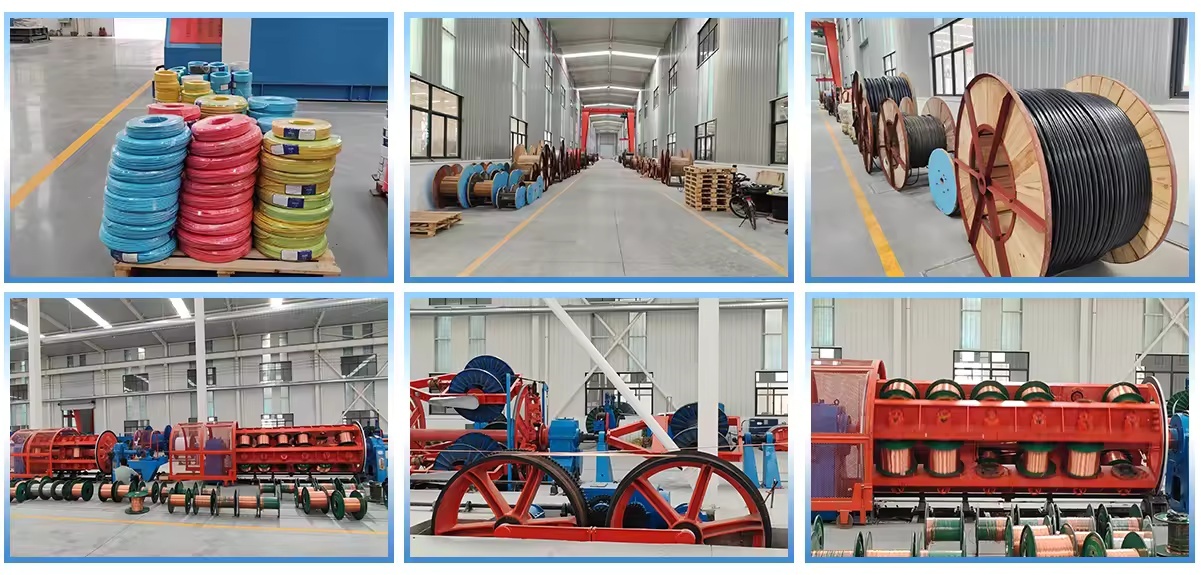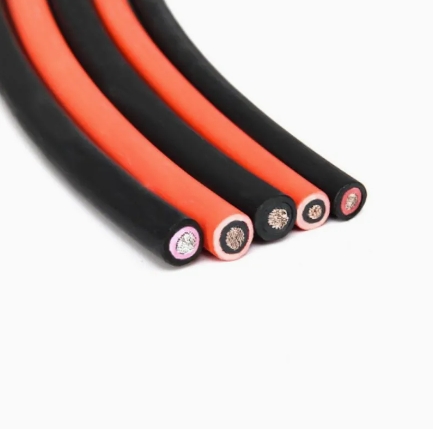Solar cable or PV (Photovoltaic) wire is specifically designed for use in solar power applications, connecting solar panels to inverters and other electrical components in a photovoltaic system. These cables are built to withstand the unique environmental conditions associated with solar installations, such as prolonged exposure to UV radiation, extreme temperatures, and humidity.
Key Characteristics of Solar Cable / PV Wire
UV Resistance: Solar cables are designed to resist degradation from ultraviolet (UV) radiation, ensuring longevity when exposed to sunlight.
Temperature Range: PV wires have a wide operating temperature range, typically from -40°C to +90°C (-40°F to +194°F) and are built to withstand extreme weather conditions.
Waterproofing: Many solar cables have moisture-resistant properties, making them suitable for outdoor use and installations in various environmental conditions.
Fire Resistance: Some types of solar cables are flame-retardant and meet fire safety standards for electrical installations.
Conductors: Usually made of copper or aluminum, the conductors are often tinned to increase corrosion resistance.
Sizes of Solar Cable / PV Wire
Solar cables come in various sizes, typically measured by their cross-sectional area, expressed in square millimeters (mm²) or American Wire Gauge (AWG). Common sizes include:
4 mm² (approximately 12 AWG): Used for small solar panel installations and in situations with limited current.
6 mm² (approximately 10 AWG): Widely used for most residential solar installations.
10 mm² (approximately 8 AWG): Suitable for larger systems or longer cable runs where lower voltage drop is critical.
16 mm² (approximately 6 AWG) and 25 mm² (approximately 4 AWG): Often used in larger, commercial installations where higher current capacity is needed.
Applications of Solar Cable / PV Wire
Connecting Solar Panels to Inverters: Most commonly used to link solar panels to the inverter, converting direct current (DC) generated by the panels into alternating current (AC) for use in homes or for feeding into the electrical grid.
Connecting DC Disconnect Switches: Used to connect switches that allow for the manual disconnection of the solar PV system from the grid or battery banks for maintenance or safety.
Linking Battery Banks: In off-grid or hybrid solar systems, they connect solar panels to charge controllers and batteries.
Comprehensive Solar Systems: Applicable in both residential and commercial solar PV systems, connecting the components of the system while ensuring safety and efficiency.
Standards and Compliance
Solar cables should meet various industry standards to ensure they are suitable for use in photovoltaic applications:
UL 4703: A standard in the United States which establishes requirements for the safety of photovoltaic wire.
IEC 60216: An international standard that specifies the methods for determining thermal endurance properties of insulating materials.
TUV: Many solar cables are tested and certified by TUV (Technischer Überwachungsverein or Technical Inspection Association) for compliance with safety and performance standards.
Solar cables (PV wires) are crucial components in a solar power system, engineered to ensure electrical efficacy and reliability under harsh environmental conditions. Selecting the proper size and type of solar cable is vital for ensuring a safe and efficient solar installation. Always adhere to local electrical codes and manufacturer guidelines when choosing and installing these cables.




